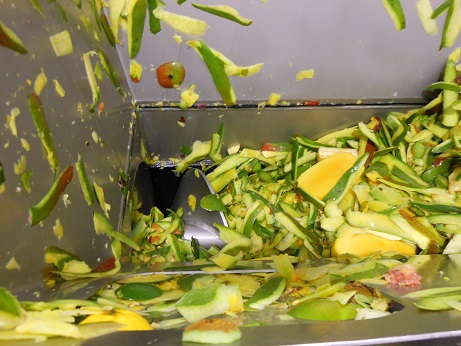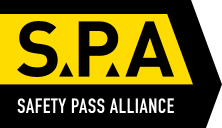Over the past few decades, there have been significant improvements in health and safety on food and drink manufacturing sites, with the overall injury rate dropping by over 50% since 1990/91. However, the sector is still responsible for over a quarter of all manufacturing injuries – more than 5,000 incidents are reported to the Health & Safety Executive (HSE) each year.

The need to reduce this figure further is perhaps more critical than ever. Not only do employers have a moral and legal responsibility to ensure the safety of their workers, but there are heavy financial penalties in place for companies that breach safety regulations. The Sentencing Council’s Definitive Guideline, which came into effect in 2016, now calculates penalties based on company turnover rather than profitability. As a result, food companies have been on the receiving end of some of the largest fines since the Guideline was introduced.
As an alternative to traditional manual labour, progressive cavity (PC) pumps can automate some of the key processes on food manufacturing sites. Here, Lesley Eaton, Marketing Executive for PC pump specialist SEEPEX UK, explains how this is helping to de-risk six of the main food factory hazards…
1. Slips and trips
According to the HSE, slips and trips are responsible for 35% of major injuries in the food and drink industry. The vast majority (90%) of slips occur when the floor is wet or contaminated with food. Transferring liquids and pastes manually via buckets or tote bins brings an inherent risk of spillages, so pumping these products instead of physically handling them eliminates this risk and significantly cuts the likelihood of a slip occurring. It also has the added effect of decreasing the number of people on the factory floor.
While pumps are renowned for their ability to transfer liquids, they are not always considered for viscous products or those containing large soft solids; such as sweet and savoury pie fillings, or yogurts and sauces containing whole fruit pieces. Yet thanks to their gentle, low shear handling action, PC pumps are able to transfer such products efficiently without damaging them; further decreasing the chance of the factory floor becoming a slip hazard.
2. Conveyors
Conveyors are involved in 30% of all machinery accidents in the food and drink industry – more than any other type of equipment. By switching to a PC pump, food producers can transfer not just liquids and semi-solids, but also solid foodstuffs, such as whole chicken breasts. By automating the handling of such products and eliminating the need for conveyors, the risk of operator injury is significantly reduced.
In addition, pumps and associated pipework are much easier to clean and maintain than conveyors and require less exposure to harsh cleaning chemicals.
3. Manual handling
In the food and drink industry, around 1,700 acute injuries per year are attributed to manual handling. By automating food transfer duties, thereby reducing the number of people required to handle foodstuffs, this figure can be significantly cut.
One process which is particularly suitable for automation is waste handling. For most food operations, this is not a core business activity, so diverting labour away from this task towards more lucrative areas also makes sound financial sense.
For example, SEEPEX has delivered automated, fully enclosed, piped waste removal systems to a number of food manufacturing sites, including Natures Way Foods. Featuring an integrated chopping and pumping system which can handle large solid food items such as mango stones, cabbages and even whole chickens, these solutions can help to reduce manual handling-related injuries at food factories.
They are also safer to maintain. Traditionally-designed PC pumps contain heavy components but in the case of SEEPEX’s Smart Conveying Technology, for example, the weight of the stator is reduced by 75%. Instead of a single unit, the pump stator is comprised of two halves, making it much lighter and safer when removing for essential maintenance.
4. Workplace transport
The second highest cause of fatal accidents on food and drink sites is workplace transport. Each year, over 200 people in food factories are struck by fork lift trucks. Enclosed piped waste removal systems such as those mentioned above eliminate the need for fork lift trucks entering the food production site. Instead, waste can be piped directly out of the factory and straight into a collection vehicle, away from high traffic areas.
5. Corrosive and abrasive materials
Some ingredients contain allergic or irritant properties, making them harmful to the skin in their concentrated state; for example, fruit acids such as malic acid. Automating the dosing process by using a PC dosing pump, rather than manually dosing, reduces the risk of exposure to the skin.
Cleaning chemicals used to sterilise equipment – such as sodium hypochlorite – can also irritate skin and even cause respiratory problems. The HSE states that cleaning-in-place (CIP) systems are a safer option for the internal disinfection of plant and equipment. Many PC pumps now come with CIP as standard, meeting the exacting requirements of the food industry without compromising employee safety.
One such example is SEEPEX’s latest hygienic PC pump; the first to meet stringent European Hygienic Engineering and Design Group (EHEDG) standards under its new testing regime. The BCFH pump range guarantees residue-free cleaning at a lower temperature and with lower chemical concentration than is normal for other CIP solutions.
6. Noise
Industrial hearing loss is the occupational disease with the highest number of civil claims, accounting for approximately 75% of all claims. Averaging 85-95 decibels, pneumatic noise and compressed air is the fifth highest process particularly associated with high noise levels.
Such is the noise impact created by air-operated diaphragm pumps – exacerbated by the fact that they are often left to run continuously – that manufacturers supply them with sound screening. By contrast, PC pumps – which only run when needed – emit considerably fewer decibels. Requiring no sound screening, they pose a lower risk to employees’ hearing.
The cost of doing nothing
While replacing manual labour with intelligent PC pumps and automated waste removal systems will increase operational efficiency and reduce costs, it is also clear that it brings significant safety benefits to food manufacturing sites. With the average fine in the 10-month period following the introduction of the new sentencing guideline increasing from £40,500 to £221,700, can any food business afford to not make the switch?
Factory Equipment .com



















